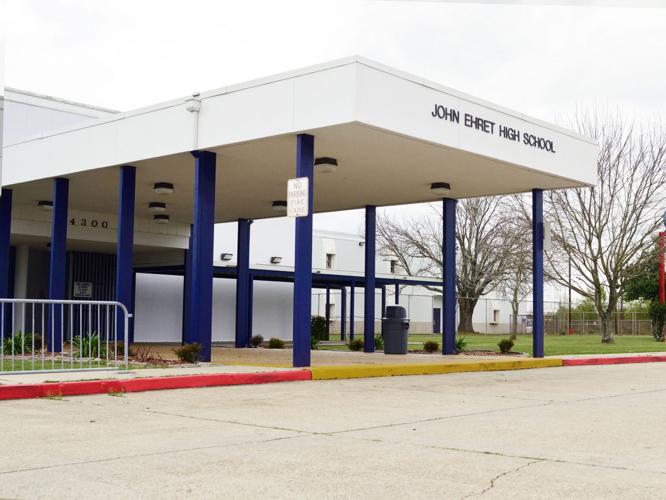Two years ago, the Louisiana Department of Education rolled out new standardized tests for high school students as part of an effort to provide more consistent measurements of student performance from third grade on.
According to data released last week, older students are struggling to improve under the new system: In most parishes, fewer than half of high school students taking the tests are scoring at "mastery" or above — the target score for schools to do well under new state standards expected to come into effect by 2025.
The 2018-19 school year marked the first time that state officials could compare two sets of scores from the new high school "LEAP 2025" tests, which so far have replaced end-of-course exams for five subjects.
Results from those English I & II, algebra I, geometry and U.S. history LEAP tests show that statewide, 39 percent of students scored at "mastery" or above, a figure that remained unchanged from the 2017-18 school year.

The state made the high school data available days after a release showing that, on average, students throughout the state in grades 3-8 made incremental gains, although only 35 percent of them scored at "mastery" or above.
The data also showed students fared better in some subjects than others as they got older, state Education Superintendent John White noted in a media briefing.
"If you look at the proficiency rates, they really do slide downward as students go into the upper grades," White said, pointing to a "real decline" in math scores as students started grappling with algebra.
"That’s troubling, and I know a number of us are digging in to try and discuss how we get more prepared and qualified teachers in the middle grades, and how we get more support for teachers," White said. "But that's clearly a trend and has been so for a long time on multiple assessments."
When the data for the seven-parish New Orleans metro area are broken out, students didn't fare much better, with five of the districts showing dips or unchanging scores for all subjects averaged together.
Three of those parishes — Jefferson, Orleans and St. John the Baptist — performed worse than the statewide average. In another two parishes, St. Tammany and St. Bernard, fewer than half of all students hit the "mastery" score target.
St. Charles Parish was the anomaly, a rare bright spot in the metro area. It showed a 12-point gain from the 2017-18 school year to last year, pushing the percentage of students who did well on the state tests up to 51 percent.
The big gain put St. Charles right behind Plaquemines Parish, where a 1-point jump meant that 52 percent of students scored at mastery or above in the 2018-19 school year.
The LEAP tests are one of three markers state education officials use to measure how well students and schools are performing. Later in the summer, White will release growth scores, which take into account how much students improve or decline on standardized tests from one year to another.
The final marker is the performance score for each school, each district and the state as a whole. It's a high-stakes measurement that, in New Orleans, can help determine which charter schools remain open or have to close. Those scores are accompanied by closely followed letter grades.
In the past couple of years, it's become harder for schools to earn higher scores. That's because state officials have rolled out tougher tests and harder standards for students as part of a reform effort to hold school districts more accountable under the Every Student Succeeds Act.
The new federal law put more pressure on states to help struggling students when it replaced the No Child Left Behind law in 2015.
Schools will no longer get high marks when students show a "basic" grasp of key concepts tested in the LEAP English, math, social studies and science assessments. Starting in 2025, students will have to achieve "mastery," the second-highest ranking that falls below only "advanced" in the pyramid showing proficiency rates, to get an "A" grade.
In his remarks, White said he was encouraged by gains he had seen across the state, and was determined to do more for teachers so they would feel better prepared to advance students as they get older.
"All in all, the story tells us that there’s continued, positive, steady improvement while there are also evident and obvious challenges," White said. "I think we just keep doing this year after year after year, working working, working, to implement plans to review the data and to get better."







